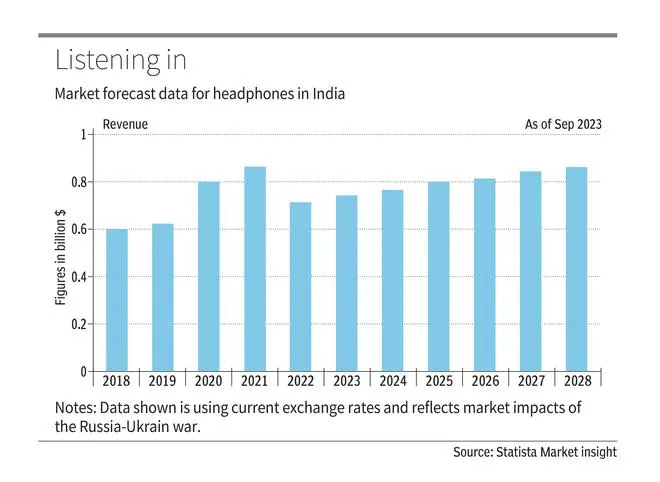Back in my teenage years, we didn’t have any headphones, I remember when I had to listen to music on the radio. We only had one radio set in the entire house, and of course, we had to share it. It wasn’t one’s personal device. The good part about having just one radio was that we were able to listen to some gems that my father liked — such as Mohammed Rafi, Lata Mangeshkar and Kishore Kumar. We ended up developing our music taste based on someone else’s playlist. The bad part was that you couldn’t listen to the music of your own liking in solitude.
Even if someone special had shared their carefully curated cassettes with you, you couldn’t play them in your house unless you wanted everyone to know that you were in love — a proposition which in those times wasn’t usually received with a lot of love. So instead, you had to go to a secluded room (if you were lucky and privileged enough to have one in your house), lock the door and then play the cassette on the lowest volume possible so that no one gets to know about your personal life. You had to pretend so much that nothing was going on in your personal life that sometimes you felt like even your partner would start feeling the same way.
Now, I look at younger people, and I can’t help but feel all this rage inside me. They have so much access to information on their fingerprints and complete privacy to do whatever they want in their digital lives, yet they exercise these freedoms so irresponsibly. People often ask me why I have so much angst against Gen-Z. Well, have you seen one in the wild? They roam around with those big bulky headphones that look like a dystopian creature has been attached to their heads.

Having my personal radio would’ve been a luxury for me. They have something far more unimaginable. These headphones enable them to escape reality and transport them into a different realm — of web series, films, YouTube videos or even reels nowadays. They have access to entertainment and information in the form of podcasts even while commuting. And, complete privacy!
But, every once in a while, they also seem to lose the very head that supports these dangly pieces of technology. I see it all the time. They cross the street while wearing the headsets and looking down at their phones! I don’t understand this behaviour; this never used to happen when we had radios. Yes, you could get beat up by your father if he found that gifted cassette of love songs, but at least you could see the slap coming which gave you a chance to dodge it, instead of being in a different world altogether and getting caught up in an accident.
I sometimes want to tell them to remove the headphones and take in the world that they are living in. I wish they stopped being so reclusive and caught up in their own world. Now young people reading this article might want to just scoff at my advice, and say, “OK, Boomer!” But I urge them to think about how their shared reality has become virtual they are missing out on shared experiences and connections in what I like to call ‘real’ life — the physical world.
I don’t have high hopes for the future either. The usage of headphones will only increase. I suppose I can’t really blame young people for the surge in the consumption of these devices either. They are living in turbulent times; they are inhabiting a world of great uncertainty, both in their personal and political spheres. Nations have gone to wars, and social media has inflicted a war on their own identity and sense of self. Of course, they want to escape reality. I just hope they are able to untangle lives more easily than the manner in which I untangled my recently bought pair of headphones. Don’t judge!
(Hamsini Shivakumar is a Semiotician and founder of Leapfrog Strategy. Prabhjot Singh Gambhir is a senior research analyst at Leapfrog Strategy.)












Comments
Comments have to be in English, and in full sentences. They cannot be abusive or personal. Please abide by our community guidelines for posting your comments.
We have migrated to a new commenting platform. If you are already a registered user of TheHindu Businessline and logged in, you may continue to engage with our articles. If you do not have an account please register and login to post comments. Users can access their older comments by logging into their accounts on Vuukle.